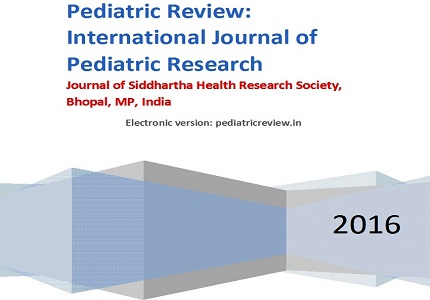Television viewing and aggressive behavior during adolescence
Abstract
Introduction: Children spend a lot of time watching television and a great deal of what they see portrays violence. Time spent watching television during preschool years has been found to predict antisocial behavior at ages 6 to 11 years and viewing time in adolescence and early adulthood has been shown to be associated with subsequent aggression.
Material and methods: We assessed 300 adolescent boys and girls of urban slum area, Bhopal of age 10-14 years with regression analysis to investigate the association between television viewing hours and criminal convictions and aggressive personality trait.
Results: Adolescence who had spent more time watching television was significantly more likely to have a criminal conviction. The associations were statistically significant after controlling for sex, IQ, socioeconomic status, previous antisocial behavior and parental control.
Conclusion: More time spent watching television in childhood and adolescence is associated with antisocial behavior in early adulthood. We believe that identifying ways to reduce children’s and adolescents’ television viewing should be considered a priority for public health.
Downloads
References
2. Zimmerman FJ, Glew GM, Christakis DA, Katon W. Early cognitive stimulation, emotional support, and television watching as predictors of subsequent bullying among grade-school children.Arch Pediatr Adolesc Med. 2005 Apr;159(4):384-8.
3. Johnson JG, Cohen P, Smailes EM, Kasen S, Brook JS. Television viewing and aggressive behavior during adolescence and adulthood. Science. 2002 Mar 29;295(5564):2468-71.
4. Johnson, Jeffrey G., et al. "Television viewing and aggressive behavior during adolescence and adulthood." Science 295.5564 (2002): 2468. [PubMed]
5. Bird HR, Canino GJ, Davies M, Zhang H, Ramirez R, Lahey BB. Prevalence and correlates of antisocial behaviors among three ethnic groups. J Abnorm Child Psychol. 2001 Dec;29(6):465-78. [PubMed]
6. Piacentini, J., Cohen, P., & Cohen, J. (1992). Combining discrepant diagnostic information from multiple sources: Are complex algorithms better than simple ones? Journal of Abnormal Child Psychology, 20, 51–63.
7. Ammons R.B., Ammons C.H. The Quick Test (QT): provisional manual. Psychol. Rep. 1962; 11:111–161.
8. Johnson JG, Smailes EM, Cohen P, Brown J, Bernstein DP. Associations between four types of childhood neglect and personality disorder symptoms during adolescence and early adulthood: findings of a community-based longitudinal study. J Pers Disord. 2000 Summer;14(2):171-87.
9. L. S. Kogan, J. Smith, S. Jenkins, J. Soc. Serv. Res. 1977; 1: 117-32.
10. D. A. Kenny, D. A. Kashy, N. Bolger, in Handbook of Social Psychology, D. Gilbert, S. T. Fiske, G. Lindzey, Eds. (McGraw-Hill, New York, NY, 1997), pp. 233-265.
11. Anderson CA, Berkowitz L, Donnerstein E, Huesmann LR, Johnson JD, Linz D, Malamuth NM, Wartella E. The Influence of Media Violence on Youth. Psychol Sci Public Interest. 2003 Dec;4(3):81-110. doi: 10.1111/j.1529-1006.2003.pspi_1433.x. Epub 2003 Dec 1. [PubMed]
12. Huesmann LR, Moise-Titus J, Podolski CL, Eron LD. Longitudinal relations between children’s exposure to TV violence and their aggressive and violent behavior in young adulthood: 1977-1992. Dev Psychol. 2003;39(2):201–221.
13. American Academy of Pediatrics. Committee on Public Education. American Academy of Pediatrics: Children, adolescents, and television. Pediatrics. 2001;107(2):423–426.

Copyright (c) 2016 Author (s). Published by Siddharth Health Research and Social Welfare Society

This work is licensed under a Creative Commons Attribution 4.0 International License.


 OAI - Open Archives Initiative
OAI - Open Archives Initiative


